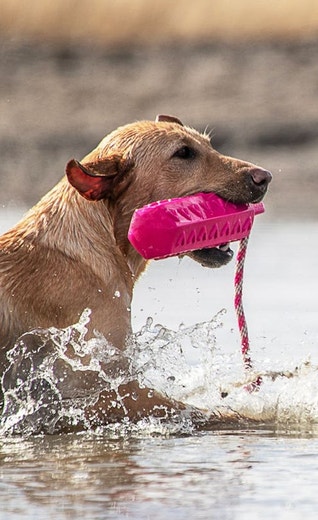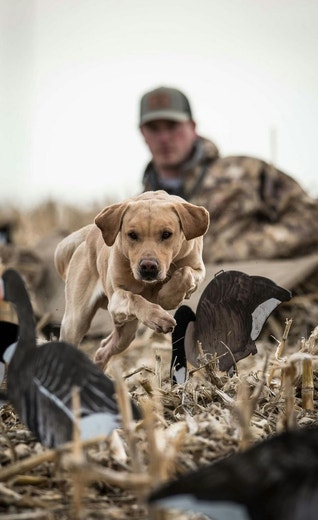
Critical Nutrients Sporting Dogs Need For Healthy Hair & Skin
Written by Russ Kelley M.S., Eukanuba and Royal Canin Pet Health and Nutrition Center
Bird dogs and retrievers work in harsh environments. Whether they’re running through New England Hawthorns, retrieving in January along Maryland’s Eastern Shore, or casting through prickly pear in Arizona, their hair and skin keep them safe.
Humans can use topical supplements like moisturizing lotion or hair conditioner for good health, but a dog doesn’t have that luxury. The condition of a dog’s hair and skin comes from proper feeding, and it’s far more important than just making them look good. Healthy hair and skin protect them from the environment.
Setters and springers have long hair and leg and tail feathers while pointers, GSP’s, and Labs sport high-and-tights that reveal incredible muscular definition. The similarity of all breeds is that the skin and coat are the dog’s largest organs. And, they are the dogs’ first line of defense against illness. Hair and skin helps protect a dog’s immune systems from allowing infection to be introduced to their bodies. Infection can enter the dog’s system through skin cuts, tears, and wounds which is why the topic is so important.
Skin cells are constantly replicated as epithelial cells are lost every day. Some are lost from normal cellular reproduction while others are removed when dogs run through fields and swim in rivers. The replacement of these cells requires a tremendous amount of protein and amino acids, so much so that from a requirement standpoint, the skin uses more protein than any other system including muscles. If you’ve ever noticed the cracked skin on a Lab that comes from repetitive water retrieves or the dry skin on a hard-working pointer then you know what I’m talking about. Those skin ailments come from the wetting and drying process just as they come from exposure to harsh terrain. If you’ve ever seen a bird dog stop to scratch itchy skin then you know one thing is true. They are concentrating on that itch and not on their job at hand. Proper feeding can help resolve the problem, especially those foods that are rich in fatty acids. Those fatty acids should be balanced with protein as that combination helps keep their skin soft and smooth. Soft, supple skin doesn’t tear easily and it keeps them protected.
In addition to protein and fat, minerals are important for maintaining healthy hair. Zinc, selenium and Vitamin E contribute to elasticity which reduces the impact of cuts, scratches, scrapes and punctures. Omega-3 and omega-6 fatty acids are what adds the sheen to a dog’s coat and help keep hair from breaking and exposing the skin to cuts. Open wounds invite disease and there is another benefit to omega-6 fatty acids; they help facilitate the proper healing of a wound. Omega-6 fatty acids help reduce the swelling and redness around a cut, scrape or tear. If your dog has dull hair then there likely is a nutritional gap than should be corrected. To select the right dog food, talk with your veterinarian.
But there is a direct correlation between a dog’s skin and its overall health, too. Epithelial cells found in the skin are also found in the GI tract. So if nutrition is creating good, healthy skin then the GI tract is likely to be healthy as well. That’s important for processing food to refuel all of the animal’s systems ranging from muscular to circulatory and respiratory.
Handlers usually notice a dog’s performance through its athleticism. Muscles, condition, and the ability to perform tasks are usually associated with their cardiovascular and muscular systems. But don’t over look the skin and hair. If skin is cracked, dry or brittle and the hair is dull, look for a new food. A dog’s skin and coat is treated from the inside-out. And a healthy dog is a happy dog, and those kinds of pups love to work hard for their handlers.




